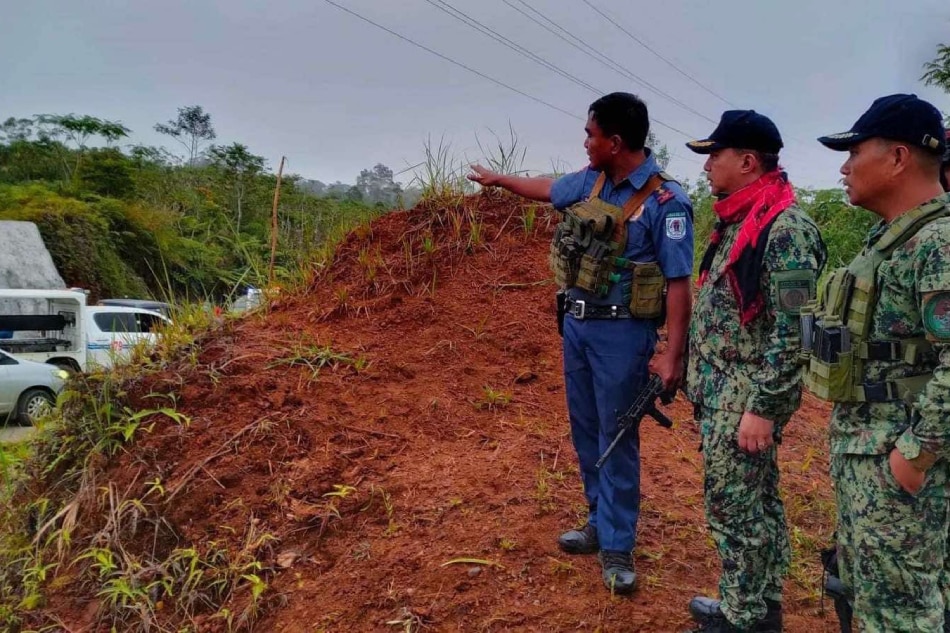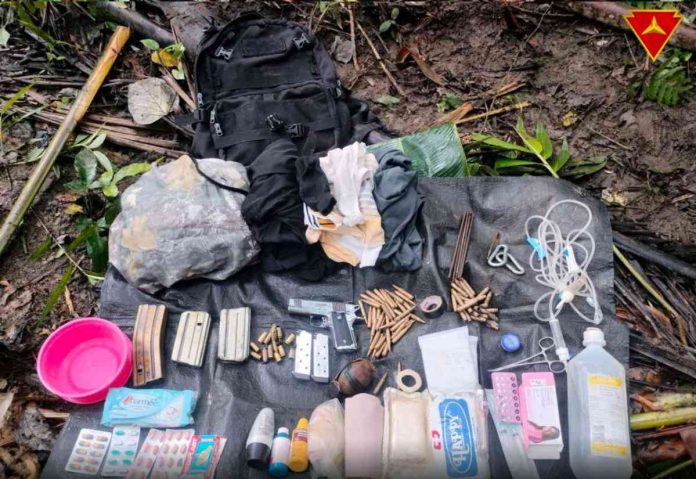Posted to the Small Wars Journal (Feb 19, 2023): PLA Information Warfare and Military Diplomacy: A Primer on Modernization Trends (By Patrick Cunningham)
The opening remarks of the 2022 National Defense Strategy (NDS) highlight the views held by many leaders within the United States on the current security environment: that “we are living in a decisive decade,” that the People’s Republic of China (PRC) “remains our most consequential strategic competitor” for the foreseeable future, and that the PRC is the only country with both the intent and capacity to reshape the international order.
[1] Underscoring these beliefs is the Department of Defense’s most current version of the “China Military Power Report” which asserts that the PRC seeks to harness all elements of national power to attain a “leading position” in strategic competition, “accelerate the integrated development of… informatization, and intelligentization” of the People’s Liberation Army (PLA), and cultivate an environment hospitable to the PRC’s strategic goals to create a “community of common destiny.”
[2] Comparatively, the PRC’s “2019 Defense White Paper” emphasizes that the PLA is in “urgent need of improving its informationization” and that building a “Community with a Shared Future for Mankind” crucially supports the PRC’s “National Defense Policy in the New Era.”
[3] Given these deliberate assessments from both U.S. and PRC perspectives, this paper seeks to examine the mutually reinforcing modernization of PLA information warfare and military diplomacy, the effects of these modernization initiatives on regional and global stability, and key weaknesses that the U.S. and partners can exploit.
PLA Information Warfare Modernization
Although the PLA has experienced various modernization efforts and reforms since its inception and especially from the 1970s onward, perhaps some of the most dramatic reforms to its structure, warfighting, and organizational culture occurred in 2015, when the PLA established the Strategic Support Force (PLASSF).
[4] Combining space, cyber, electronic warfare (EW), and psychological operations (PSYOP) forces from across the PLA services and its former General Departments, the PLASSF was established as the PLA’s primary arm for the conduct of information warfare.
[5] Although the PLA publicized the growing concept of information warfare in a series of Liberation Army Daily articles by “Senior Colonels” Wang Baocun and Li Fei in June of 1995, the predominant mentality was that forces would shrink due to advanced technology rather than reorganize to maximize information warfare capability.
[6]Prior to the creation of the PLASSF in 2015 and centralization of forces through PLA reform efforts, information warfare efforts were essentially disparate and located under separate organs of former PLA General Staff Departments.
[7] In creating the PLASSF, the PLA took a remarkably practical approach towards information warfare by fusing operational elements responsible for airspace surveillance, satellite navigation control, and a variety of navigation, meteorological, and oceanographic space systems that comprised the Survey, Map, and Navigation Bureau from the PLA First Department; a myriad of intelligence, surveillance, and reconnaissance (ISR) analysts, collection managers from the PLA Second Department; cyber surveillance personnel and systems from the PLA Third Department, and the entirety of the former “Informatization” Department responsible for PRC command, control, communications, computers, and intelligence (C4ISR) as well as some degree of science and technology contracting and development.
[8] Members of the former General Political Department, specifically the 311 Base responsible for PLA PSYOP, was also consolidated from the former General Political Department and into the new Political Work Department of the PLASSF in order to unify cyber, EW, and psychological warfare capabilities.
[9] The emergence of the PLASSF in 2015 from an assortment of siloed PLA units and capabilities signaled a broader philosophical evolution of effects-based targeting methodology, as the core strategy behind PLASSF employment is to “paralyze the enemy’s operational system-of-systems,” sabotage adversarial mission command during the initial stages of conflict, and shape public opinion before, during, and after the conflict occurs.
[10] Moreover, the founding of the PLASSF also reflected a domain-based shift in Chinese military thinking from seeking to dominate “land-based territorial defense” to instead maintaining “extended power projection” and “[protecting] Chinese interests in the strategic frontiers of space, cyberspace, and the far seas.”
[11] Through these reforms, the PLASSF became the PRC’s conduit for joint information warfare and a means by which the PLA could overcome a militarily superior adversary.
[12]Following the consolidation of forces into the PLASSF, two primary departments were formed to serve as the nexus for information warfare: the Space Systems Department and the Network Systems department. Alongside the Staff, Political Work, Logistics, and Equipment Departments, these two primary arms actualize the PLASSF’s enduring mission of “securing information dominance by carrying out strategic, operational, and tactical [space, information, and] cyberspace operations” to “seize access to information, maintain decision making advantage during joint operations, and ensure national network security,” as well as the PLASSF’s wartime mission of seizing and exploiting the “information domain to enable other PLA forces to achieve decision superiority” and coordinating information-related capabilities to capitalize on kinetic strikes.”
[13] Together, the PLASSF Space Systems Department and the Network Systems Department enable a variety of operations across space, cyberspace, and within the information environment. Collectively, these two departments enable what the 2015 National Defense University version of the Science of Military Strategy refers to as “integrated reconnaissance, attack, and defense” in the space and cyber domains, marking a distinction in PLA thinking that operations in these domains are “operations in their own right” as opposed to merely supporting efforts to operations across land, air, or maritime domains.
[14]The PLASSF’s two departments also enable the execution of the PLA’s now ubiquitous “Three Warfares” – a PRC warfighting model that encourages the synchronization of psychological warfare, public opinion warfare, and legal warfare to gain an advantage over an adversary.
[15] PRC Psychological Warfare “seeks to undermine an enemy’s ability to conduct combat operations” by deterring, shocking, demoralizing, or eliciting specific behaviors from adversary military personnel and supporting target audiences. Public opinion warfare seeks to mold domestic and international public perceptions towards the PRC’s military actions and dissuade adversaries from taking actions contrary to Beijing’s interests. Legal warfare employs international and domestic law to assert legal superiority and backing behind the PRCs operations, activities, and interests, build international consensus, and restrict non-Chinese freedom of movement in multiple domains.
[16]Broadly, the PRC and PLA have employed these three warfare methodologies to pursue and reinforce several key narratives across the Indo-Pacific: Chinese dominance is the historic norm and is inevitable, the Chinese Communist Party (CCP)’s objectives are permanent and unchanging, the CCP and PLA cannot be deterred and will pay any price to achieve Beijing’s objectives, and that the U.S. is an increasingly weak, unpredictable, and unreliable ally.
[17] In Singapore, the CCP has sought to influence many Singaporean elites to maintain open trade with China and at the very least remain “unopposed” towards China’s efforts to join the Comprehensive and Progressive Agreement for Trans-Pacific Partnership – ironically an organization that exists to advance a liberal, rules-based economic order in the Indo-Pacific.
[18] In Thailand, China has endeavored to influence the public opinion of many decision-makers in order to gain opportunities to construct high-speed rail, proliferate Huawei’s 5G network, and sell comparatively cheaper military equipment, such as submarines, to the Thai military.
[19] China’s state-media, diplomatic personnel, and business entities operating in the Solomon Islands – and across the South Pacific – employed each of the aforementioned narratives to elicit Belt and Road Initiative participation, diplomatic recognition of China over Taiwan, and encourage the denouncement of western ideals by political officials.
[20] China has also launched an international and domestic influence campaign to label human rights violations and Uyghur genocide as “counterterrorism operations” and continues to bombard Taiwan with disinformation and a blend of psychological and public opinion warfare to encourage peaceful reunification with the mainland. Both of these attempts have largely failed, but the PRC’s deep-seated focus on eliminating internal threats and “Taiwanese separatists” continue to breathe life into these ineffective influence campaigns.
[21]PLA Military Diplomacy Modernization
PLA Military Diplomacy serves as another aspect of overarching PRC foreign policy efforts designed to forge a more favorable international image, develop soft power, mold international discourse, shape China’s security environment, and learn from advanced militaries.
[22] Several PLA documents reinforce these key goals, stating that military diplomacy encompasses “personnel exchange, military negotiations, arms control negotiations, military aid, military intelligence [and technology] cooperation, international peacekeeping, military alliance activities” and is “an important component of a country’s foreign relations” and a “necessary part of national interest.”
[23] PLA academics have also distinguished that the roles of military diplomacy differ in times of peace and war. During peacetime, military diplomacy “maintains and develops bilateral security relations,” assists in “handling international security issues… molds the [PRC’s] strategic environment… provides a platform to enhance international influence of the [PRC] and the [PLA]… and promotes national defense and military construction.”
[24] Comparatively, during war the primary focus of military diplomacy is to “strengthen our alliances and weaken those of the enemy… win military aid and material support for combat… win international moral and legal support… provide a channel to end the war… and resolve post war problems.”
[25] Interestingly, unlike the United States, the PLA does not view Building Partner Capacity (BPC) as a goal of military diplomacy, but rather an arm of foreign policy and an learning experience – strengthening bilateral relations and observing techniques of other militaries as opposed to improving interoperability between nations.
[26] “Military diplomacy” as “an official policy” first appeared in the 1998 defense white paper, and although some form of PLA military diplomacy had been occurring from 1949, some of the most well documented examples emerge from 2003 onward, coinciding with the first full year of the Hu Jintao era.
[27] Despite China’s efforts to reform and “open up” in the late 1970s, the PLA lagged behind most other parts of the Chinese government in engaging other militaries – likely due to fear of revealing military weaknesses or an inability to match the standards of more advanced militaries.
[28] Still, China did employ PLA troops in support of military diplomacy through United Nations Peace Keeping Operations (UNPKO) when it sent five military observers to the UN Truce Supervision Organization in 1990. Since then, China’s contributions to UNPKO have increased dramatically, with China having deployed over 27,000 PLA personnel across the globe in support of 23 UNPKOs.
[29] From 2005 onward, PRC military diplomacy expanded to include Shanghai Cooperation Organization representatives that participated in exercises alongside Russia that included counterterrorism, air defense, and aerial refueling drills.
[30]Since Xi Jinping took power in 2012, PLA military diplomacy increased dramatically. Starting in 2013, PLA engagements with U.S. treaty allies in Asia skyrocketed and overall military exercises increased roughly 600% from 2013 to 2016. PLA military diplomacy increased most substantially in Army and Navy international military exercises focused on “Combat Support” activities such as engineering, communications, resupply, survival skills, and fleet navigation and maneuvers; “military operations other than war” which include PKO; and military competitions.
[31] Since 2014, the PLA Army and Air Force have participated in multilateral military competitions hosted by Russia, which reflects a “growing confidence” that the PLA can “match international [military] standards.”
[32] China scholars Kenneth Allen, Phillip Saunders, and John Chen assessed that from 2003-2006, 83 percent of PLA military diplomacy included “senior-level meetings,” or meetings that include Central Military Commission (CMC) Vice Chairmen and CMC member-grade levels, that focused on constructing a “favorable security environment” to the PRC and “promoting common development.”
[33] Since 2018, the PLA has continuously emphasized the roles of defense attachés and the professional military education (PME) opportunities offered by China to foreign military officers.
[34] An examination of PLA military diplomacy from 2003 onward highlights that these activities – collective training, PKOs, competitions, and education exchanges – reflect a growing PLA confidence in their capabilities and that they will not embarrass themselves and undergird the concept that “almost all military diplomatic activities support China’s overall diplomatic efforts.”
[35]Constraints and Weaknesses of PLA Information Warfare and Military Diplomacy
Taken together, PLA information warfare and military diplomacy are mutually reinforcing and symbiotic activities. Messaging efforts through legal, psychological, and public opinion means highlight historic and inevitable Chinese dominance, the undeterrable dedication of the CCP and PLA, and their respective benefits over the U.S. PLA military diplomacy often reinforces these narratives through physical actions and engagements, with many talking points of senior-level engagements aiming to match scripted word with deed.
[36] Yet, despite Beijing’s growing effort to modernize information warfare and military diplomacy capabilities, they are not without weaknesses, constraints, and areas for exploitation.
PLA’s approach to information warfare suffers from several key weaknesses: bureaucratic infighting, cumbersome approval processes, centralized decision-making, and a seeming overconfidence in their own data-sensing capabilities. Together, these factors are a recipe for strategic miscalculation or disaster. The continued refinement and development of the PLASSF underscores the PLA’s increasing focus and prioritization of the space, cyber, and information domains, but Beijing’s increasing faith in the efficacy of their data and collection systems leaves them vulnerable to deception activities and disruption. Clandestinely degrading PLA collection mechanisms, employing deception to prompt misallocation of resources, executing influence activities to expose contradictions in Beijing’s information operations and or elicit PLA infighting, and disrupting PLA command and control are all possible means for the U.S., allies, and partners to exploit weaknesses in the PLA’s information warfare apparatus.
Regarding the PLA’s military diplomacy, several constraints and exploitation opportunities exist. Military diplomacy incurs an opportunity cost, both in terms of personnel time and monetary expenses.
[37] The PLA also concentrates its military diplomacy in Asia, with a lesser but growing emphasis in the “global south.” PLA culture tends to prioritize “form over substance” and this manifests itself in terms both rigidity of personal interactions with partner forces and talking points, as well as fairly unmodifiable engagement schedules. All of these factors make it difficult to “build strong personal or institutional ties with foreign counterparts.”
[38] U.S. engagement – whether through U.S. embassy diplomats, military attaches, or special operations forces charged with building partner capacity, can take advantage of the PLA’s lower maneuverability, higher opportunity costs, and lackluster interpersonal tact by doubling down on areas of strategic importance and taking every opportunity to build personal ties and deliver superior training or education.
Conclusion
Since the mid 1970’s, the PRC has sought to modernize their information warfare and military diplomacy efforts. Through a deliberate consolidation of forces and refinement of mission sets, the PLA established the PLASSF to serve as a dedicated information warfare force. More than simply a “support force” for the PLA Army, Navy, and Air Force, the PLASSF was purpose built to execute integrated space, cyber, and information operations. From a PLA military diplomacy standpoint, what began as PKO in the early 1990s transformed into a global initiative – although most concentrated in the Indo-Pacific region – to leverage military exercises, PKOs, competitions, and a variety of other engagements to extend Beijing’s foreign policy through military means. While PLA military diplomacy and information warfare serve as mutually reinforcing mechanisms to assist the PLA in winning “informatized,” and “intelligentized” local wars, they are not without weaknesses or constraints. U.S. policymakers would be wise to aggressively modernize their own military’s information warfare capabilities, capacity to operate in a contested space, cyberspace, and information environment, foster interoperable military partners and allies in the Indo-Pacific, and seek to influence and develop partner governments in the “global south.” The PRC may remain the U.S. pacing threat and most significant competitor for decades to come. Understanding and outmaneuvering our chief adversary is key to sustaining U.S. influence in an increasingly multipolar world.
Bibliography
Allen, Kenneth, Phillip C Saunders, and John Chen. Chinese Military Diplomacy, 2003-2016: Trends and Implications. Washington, DC: National Defense University Press, 2017.
Bastian, A. A. “China Is Stepping Up Its Information War on Taiwan.” Foreign Policy (blog). Accessed December 20, 2022. https://foreignpolicy.com/2022/08/02/china-pelosi-taiwan-information/.
Cai, Penghong. “ASEAN’s Defense Diplomacy and China’s Military Diplomacy.” Asia Policy, no. 22 (2016): 89–95. https://www.jstor.org/stable/24905114.
Campbell, Caitlin. “China’s Military: The People’s Liberation Army (PLA),” n.d.
“China’s Application of the ‘Three Warfares’ in the South China Sea and Xinjiang.” Orbis 63, no. 2 (2019): 187–208. https://doi.org/10.1016/j.orbis.2019.02.007.
Costello, John, and Joe McReynolds. China’s Strategic Support Force: A Force for a New Era. China Strategic Perspectives 13. Washington, D.C: National Defense University Press, 2018.
Lee, John. “Chinese Information and Influence Warfare in Asia and the Pacific.” Policy Memo. Washington, DC: Hudson Institute, September 2022.
Martin, Morgan. “China’s Three Information Warfares.” U.S. Naval Institute Proceedings 147, no. 3 (March 2021): 1417. https://www.usni.org/magazines/proceedings/2021/march/chinas-three-information-warfares.
Pollpeter, Kevin, and Ken Allen. PLA as Organization 2.0. Air University, Maxwell AFB, AL: China Aerospace Studies Institute, 2018. https://apps.dtic.mil/sti/pdfs/AD1082742.pdf.
The State Council Information Office of the People’s Republic of China. China’s National Defense in the New Era. First Edition 2019. Beijing, China: Foreign Languages Press, 2019.
Jamestown. “The Strategic Support Force: China’s Information Warfare Service.” Accessed December 19, 2022. https://jamestown.org/program/the-strategic-support-force-chinas-information-warfare-service/.
U.S. Department of Defense. “2022 National Defense Strategy of the United States of America,” October 27, 2022. https://media.defense.gov/2022/Oct/27/2003103845/-1/-1/1/2022-NATIONAL-DEFENSE-STRATEGY-NPR-MDR.PDF.
———. “Military and Security Developments Involving the People’s Republic of China: 2022 Annual Report to Congress.” Annual. Washington, DC: Office of the Secretary of Defense, November 29, 2022. https://www.defense.gov/News/Releases/Release/Article/3230516/2022-report-on-military-and-security-developments-involving-the-peoples-republi/.
Wang, Baocun, and Fei Li. “Information Warfare.” Beijing, China: Academy of Military Science, June 13, 1995. https://irp.fas.org/world/china/docs/iw_wang.htm.
Wuthnow, Joel, and National Defense University Press, eds. The PLA Beyond Borders: Chinese Military Operations in Regional and Global Context. Washington, D.C: National Defense University Press, 2021.
FOOTNOTES
[1] U.S. Department of Defense, “2022 National Defense Strategy of the United States of America,” October 27, 2022, 3.
[2] U.S. Department of Defense, “Military and Security Developments Involving the People’s Republic of China: 2022 Annual Report to Congress,” Annual (Washington, DC: Office of the Secretary of Defense, November 29, 2022), 1.
[3] The State Council Information Office of the People’s Republic of China, China’s National Defense in the New Era, First Edition 2019 (Beijing, China: Foreign Languages Press, 2019), 6–10.
[4] John Costello and Joe McReynolds, China’s Strategic Support Force: A Force for a New Era, China Strategic Perspectives 13 (Washington, D.C: National Defense University Press, 2018), 1.
[5] Costello and McReynolds, 1–5.
[6] Baocun Wang and Fei Li, “Information Warfare” (Beijing, China: Academy of Military Science, June 13, 1995), https://irp.fas.org/world/china/docs/iw_wang.htm.
[7] “The Strategic Support Force: China’s Information Warfare Service,” Jamestown, https://jamestown.org/ program/the-strategic-support-force-chinas-information-warfare-service/.
[8] Kevin Pollpeter and Ken Allen, PLA as Organization 2.0 (Air University, Maxwell AFB, AL: China Aerospace Studies Institute, 2018), 142–51, https://apps.dtic.mil/sti/pdfs/AD1082742.pdf.
[9] Costello and McReynolds, China’s Strategic Support Force: A Force for a New Era, 10.
[10] Costello and McReynolds, 2.
[11] Costello and McReynolds, 1.
[12] Caitlin Campbell, “China’s Military: The People’s Liberation Army (PLA),” 40.
[13] Joel Wuthnow and National Defense University Press, eds., The PLA Beyond Borders: Chinese Military Operations in Regional and Global Context (Washington, D.C: National Defense University Press, 2021), 154.
[14] Costello and McReynolds, China’s Strategic Support Force: A Force for a New Era, 12.
[15] Costello and McReynolds, 10.
[16] Morgan Martin, “China’s Three Information Warfares,” U.S. Naval Institute Proceedings, Vol 147, no. 3 (March 2021): 1417, https://www.usni.org/magazines/proceedings/2021/march/chinas-three-information-warfares.
[17] John Lee, “Chinese Information and Influence Warfare in Asia and the Pacific,” Policy Memo (Washington, DC: Hudson Institute, September 2022), 6.
[18] Lee, 9.
[19] Lee, 9–10.
[20] Lee, 12–13.
[21] A. A. Bastian, “China Is Stepping Up Its Information War on Taiwan,” Foreign Policy, https://foreignpolicy.com/2022/08/02/china-pelosi-taiwan-information/; “China’s Application of the ‘Three Warfares’ in the South China Sea and Xinjiang,” Orbis 63, no. 2 (2019): 199–207, https://doi.org/10.1016/j.orbis.2019.02.007.
[22] Allen, Kenneth, Phillip C Saunders, and John Chen, Chinese Military Diplomacy, 2003-2016: Trends and Implications (Washington, DC: National Defense University Press, 2017), 1.
[23] Allen, Kenneth, Saunders, and Chen, 8.
[24] Allen, Kenneth, Saunders, and Chen, 8.
[25] Allen, Kenneth, Saunders, and Chen, 8.
[26] Allen, Kenneth, Saunders, and Chen, 11.
[27] Penghong Cai, “ASEAN’s Defense Diplomacy and China’s Military Diplomacy,” Asia Policy, no. 22 (2016): 91, https://www.jstor.org/stable/24905114; Allen, Kenneth, Saunders, and Chen, Chinese Military Diplomacy, 2003-2016: Trends and Implications, 67.
[28] Allen, Kenneth, Saunders, and Chen, Chinese Military Diplomacy, 2003-2016: Trends and Implications, 22.
[29] Allen, Kenneth, Saunders, and Chen, 41.
[30] Allen, Kenneth, Saunders, and Chen, 11.
[31] Allen, Kenneth, Saunders, and Chen, 31–33.
[32] Allen, Kenneth, Saunders, and Chen, 3.
[33] Allen, Kenneth, Saunders, and Chen, 12.
[34] U.S. Department of Defense, “Military and Security Developments Involving the People’s Republic of China: 2022 Annual Report to Congress,” 164.
[35] Allen, Kenneth, Saunders, and Chen, Chinese Military Diplomacy, 2003-2016: Trends and Implications, 58.
[36] Allen, Kenneth, Saunders, and Chen, 60.
[37] Allen, Kenneth, Saunders, and Chen, 13.
[38] Allen, Kenneth, Saunders, and Chen, 4.
https://smallwarsjournal.com/jrnl/art/pla-information-warfare-and-military-diplomacy-primer-modernization-trends














